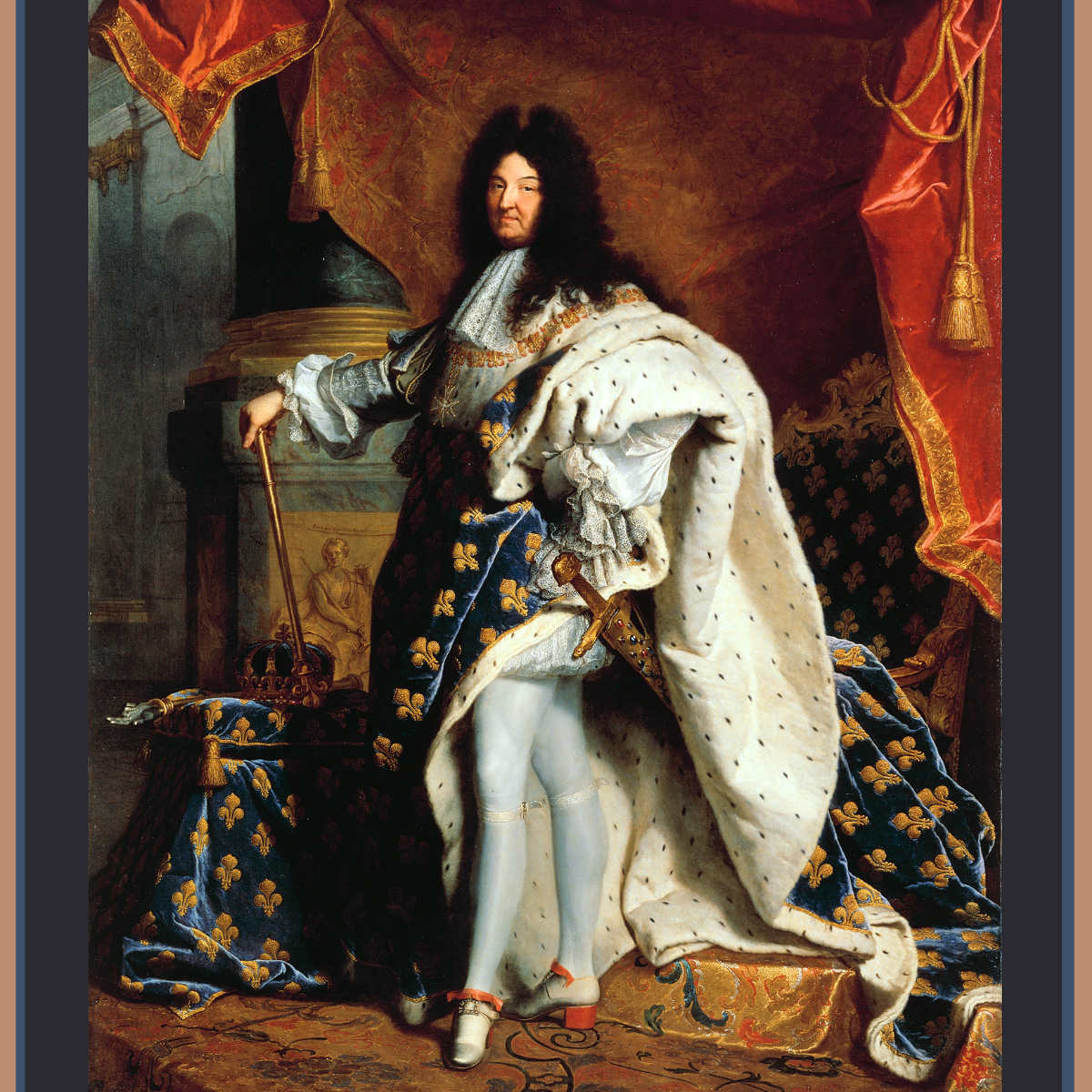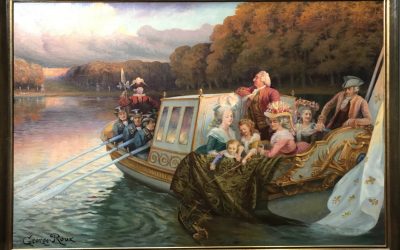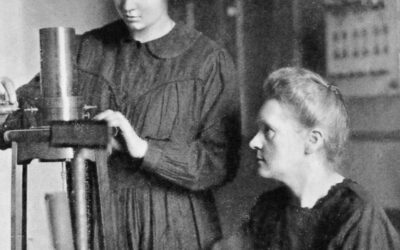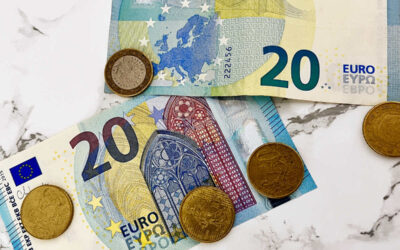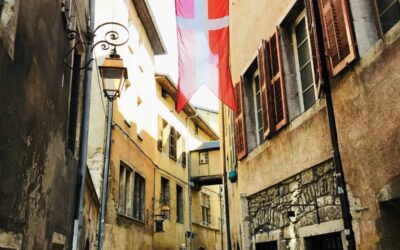If you’re planning a trip, or have already been to the famous Palace of Versailles, you may have heard about a certain someone called the Sun King Louis XIV. Known as Louis “quatorze” meaning fourteen, he was the 14th “King Louis” of France, and arguably the most famous.
Ruling France for over 72 years, the Sun King would consolidate absolute royal power as no one had done before him, or would do after him.
Beyond building a palace, he made France the cultural center of Europe, influencing other foreign royal courts with his fashion sense and etiquette. He was also a very controversial historical figure, waging wars and sidelining his enemies with ease.
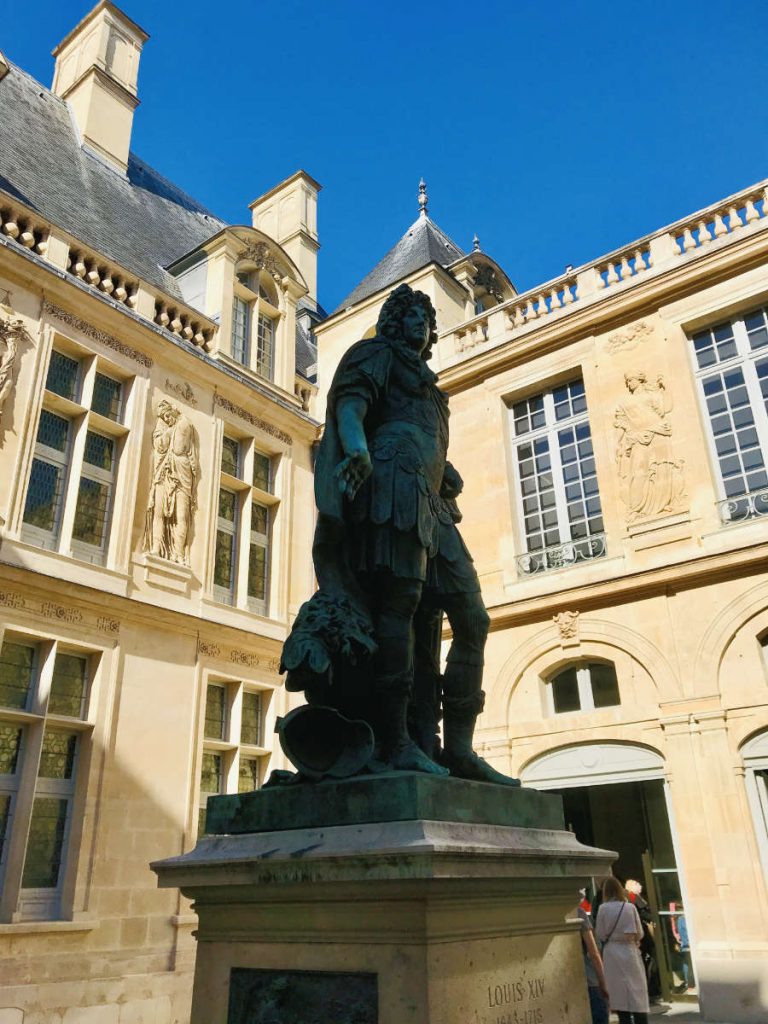
The King’s life was full of dramatic events, including his one (or perhaps two) marriages, multitude of illegitimate children, vast territorial claims, aggressive persecutions, and much more.
So let’s uncover the facts about the life of Sun King Louis XIV of France, shall we? Allons-y!
1. He was born in Saint-Germain-en-Laye in 1638.
Louis was born in the Château de Saint-Germain-en-Laye in the town of Saint-Germain-en-Laye. Today this is a suburb of Paris located in the Yvelines, although in those days it would take almost an full day to get there by horse.
His parents were French King Louis XIII and a Spanish princess named Anne. They had married each other at age 14, and it took them 23 years and a series of stillbirths to finally have Louis.
In fact, his parents had a rather antagonistic relationship at the time, which why young Louis was not born at one of the larger French royal palaces.
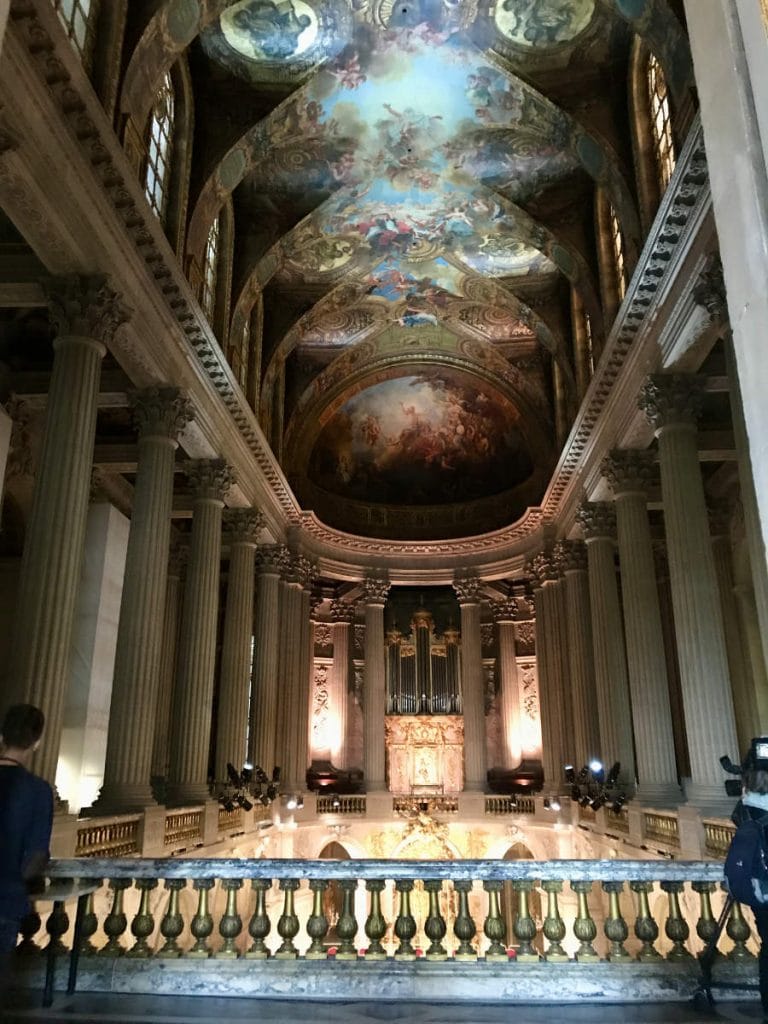
2. He became King at the age of 5.
At the age of 4, young Louis became King when his father died of tuberculosis at the age of 41. (His father himself, had become King at 9 years old).
His mother, who was known as “Anne of Austria” would act as his Regent. Anne was the daughter of the King of Spain, but her family belonged to the “House of Austria” which would later become the “House of Habsburg”.
Habsburg Spain and Austria were at the time, major rivals of France. So a Habsburg Regent of France was not welcomed by the French people.
3. He and his mother were held prisoner at Palais Royal.
It was a tumultuous time known as the Fronde, with nobles at the time contesting Anne.
At one point, the 12-year old Louis and his mother were held prisoner at Palais Royal in Paris (the palace next to the Louvre) until they conceded to the demands of the frondeurs.
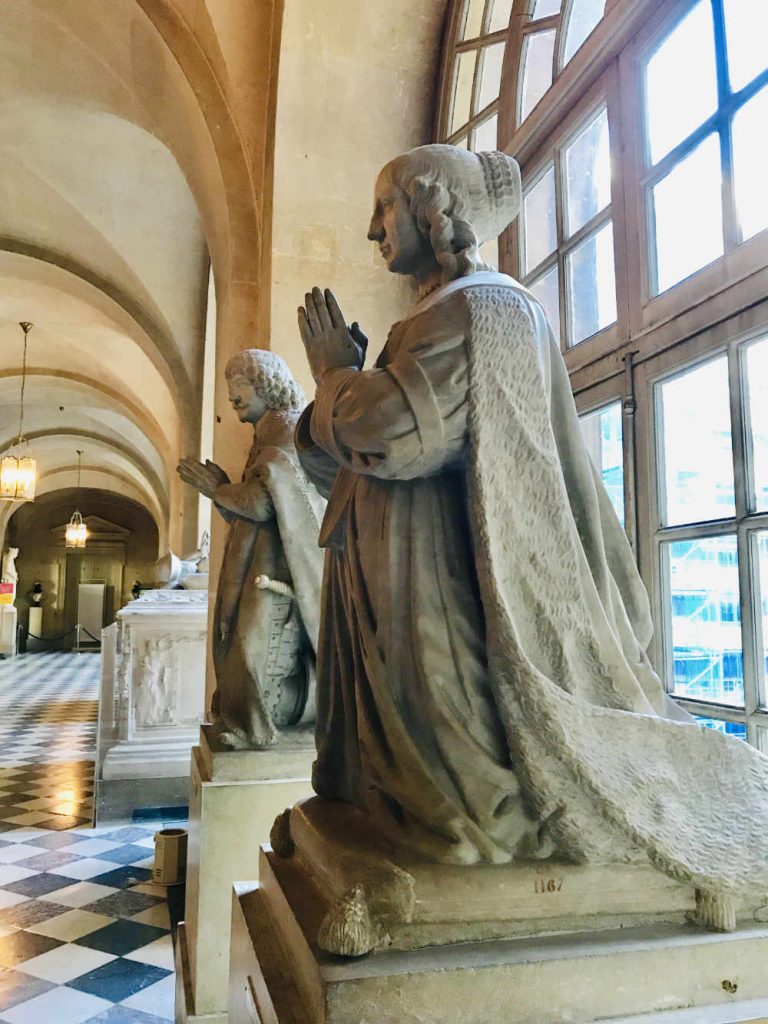
This made Louis detest and distrust Paris. But he nonetheless, moved into the Louvre Palace as an adult and started making more renovations including the Cour Carré and Louvre Colonade that we can still see today.
4. He began converting a hunting Lodge in the forest of Versailles.
At 21, in 1661 young Louis reached his majority, and started looking for a new power base.
It was actually the Sun King’s dad, Louis XIII, who bought the property with a hunting lodge on it, in an area called Versailles that was a few of hours away from Paris by horse.
The location was far enough away from Paris that the nobles of the land would have to stay overnight at Versailles, rather than returning to their own homes in Paris.
Wanting to make a statement and establish himself as a strong monarch, Louis, with the help of his advisers, embarked on one of the most complicated building projects in history.
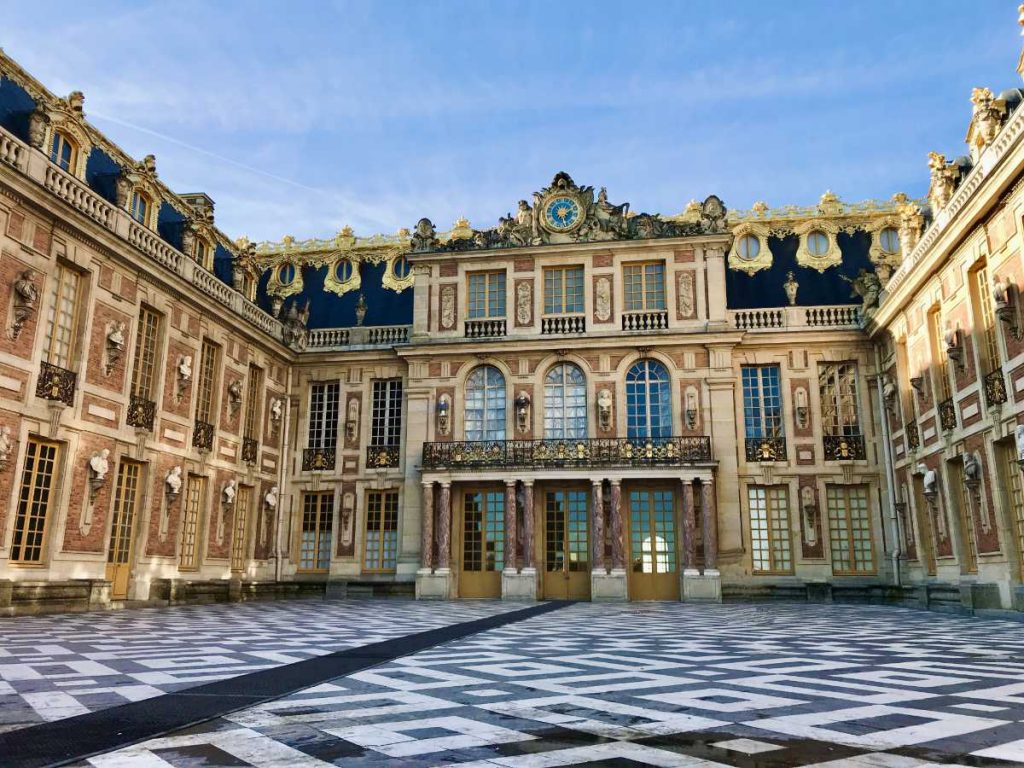
5. He began construction at the Château de Versailles.
Construction at the Château de Versailles began immediately on a grand scale, adding several wings, new apartments, and new buildings to house the royal court, its servants, and all their hangers-ons.
Historians estimate that over 36,000 workers would work on the site for half a century, including diggers, pavers, masonry specialists, plasterers, sawyers, carpenters, plumbers, locksmiths, ironworkers, glaziers, etc.
The Sun King would also mobilize a military workforce, less expensive, which will be mainly responsible for ploughing and landscaping around the grounds.
6. Workers’ rights were terrible under his reign.
But Louis was not a kind taskmaster. Workers were expendable if it meant that he could expand bigger, higher, and faster. Thousands of workers died to build the palace (link in French). At the time, there was no such thing as workers’ rights.
The Palace imposed a very strict discipline on its workers. Both the quality of the work and the attendance of the workers were harshly judged, with prison sentences or corporal punishment for offenders. These difficult working conditions lead to numerous work accidents, sometimes fatal.
In addition, the lack of surrounding amenities added to the deplorable health conditions. Records show that the first cause of death at the Palace of Versailles amongst the workforce were undernourishment and disease.
Under these shoddy conditions, the old hunting lodge was transformed into the luxurious palace it is today.
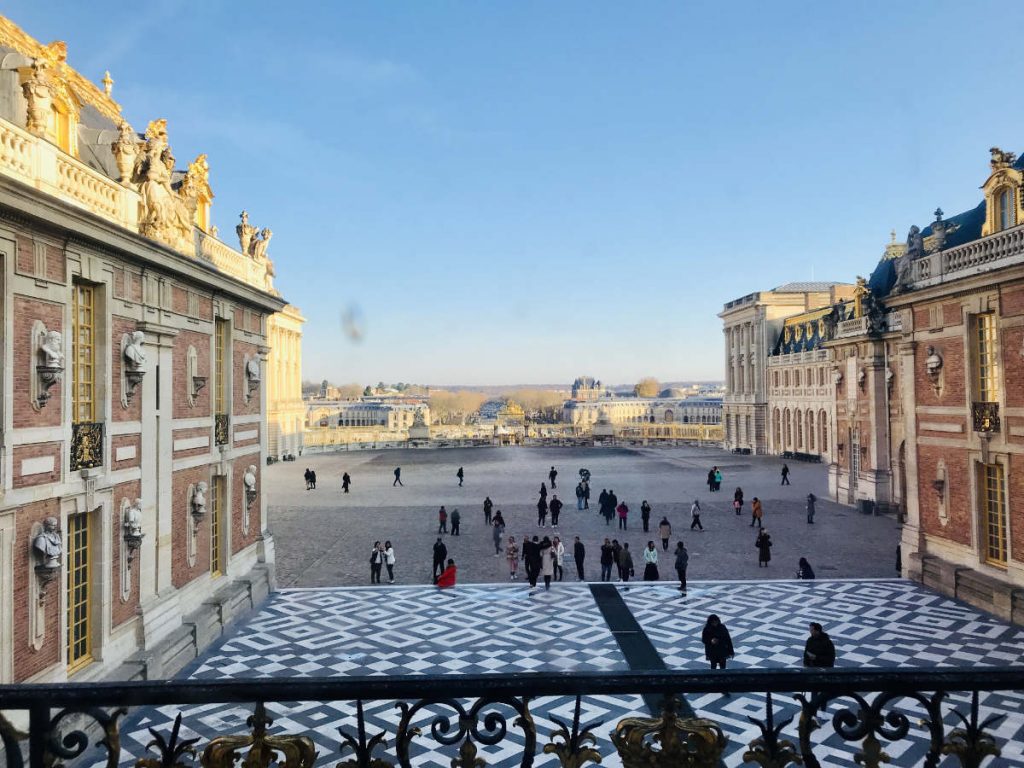
7. Life at the Palace of Versailles was unpleasant.
Work continued at the Palce of Versailles for several decades and the Royal court based at Versailles lived in the middle of a construction zone. At the time there was no running water, no private rooms even for the lords and ladies, and comfort at a minimal.
The place also stank, since bathing was not common. To get a good room, you were dependent on being in the Sun King’s good graces. Versailles was not a pleasant place to be.
8. He implemented strict protocols at court.
There was a strict protocol in place as to how and when one could address the king. As was the case in those days, the closer you could get to the King’s Bedchamber was an indication of how important you were.
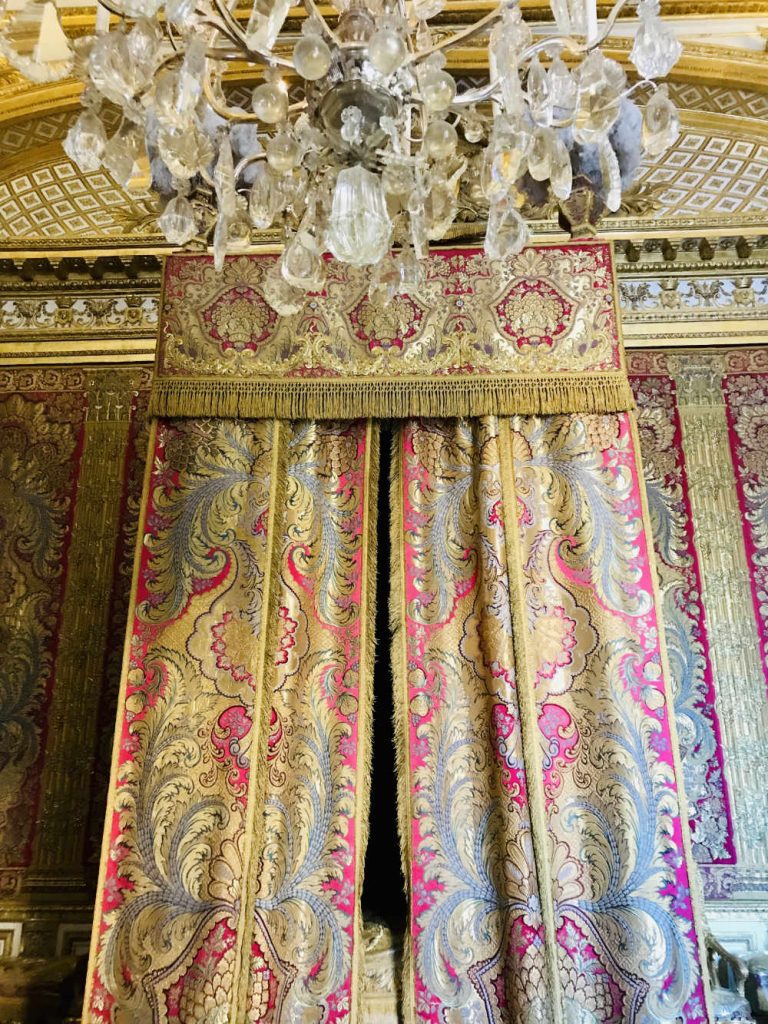
Watching the King perform his levée (waking up and getting dressed ceremony), or couchée (bedtime undressing ceremony), was the highlight of the day for nobles hoping to curry favor with the King.
Every hour of the King’s day would be precisely organized with all the trappings of formality around it. Dignitaries and diplomats would be greeted in the State apartments, while access to his private apartments was much more restrictive.
Dinner time was strictly observed, with the King surrounded by courtiers and valets to take part in the “Grand Couvert“. Nobility would be placed near the King, according to their importance and rank.
9. He adopted the sun as his symbol.
Louis XIV is called the sun king because he adopted the sun as his emblem. He believed that France revolved around him, as planets revolved around the sun, hence the name.
10. He created new etiquette rules and a dress code.
Along with other restrictions, Louis XIV imposed a strict dress code, insisting on the finest materials. This meant that all the nobles of the land spent their money on outfits, bankrupting themselves, instead of being able to pay soldiers to cause trouble.
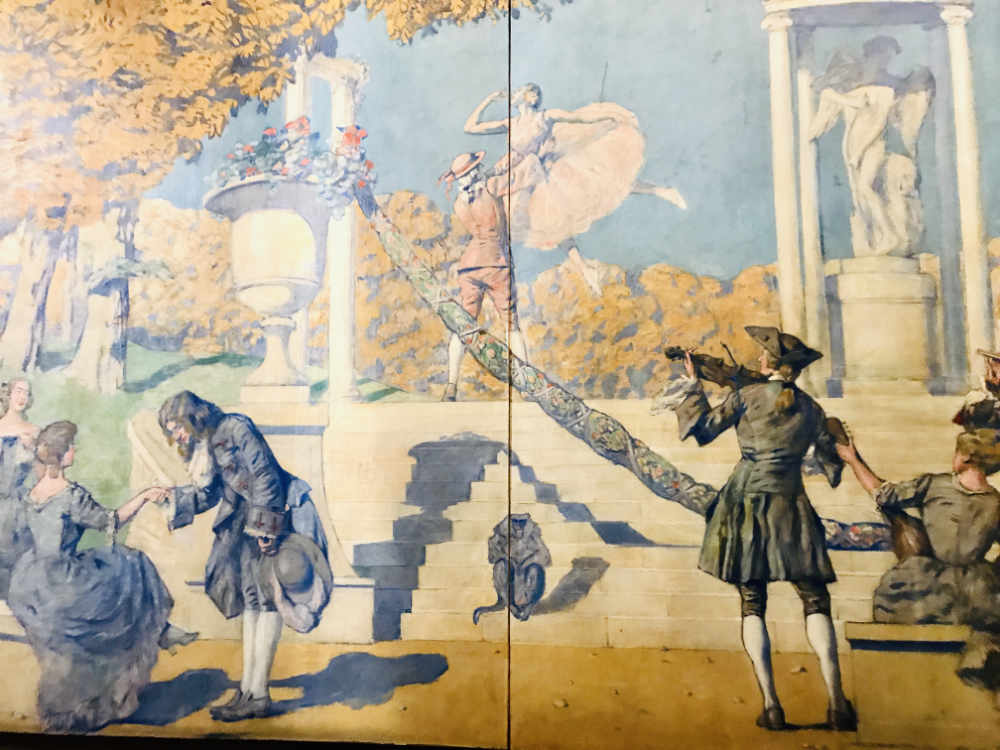
Louis’s plan was worked, and France became the capital of fashion, etiquette, and culture. The French love of art de la table and art de vivre all stem from the rules that were put in place at Versailles.
11. He was a very good ballet dancer.
Louis loved ballet and in his younger days, regularly performed in court ballets. He is believed to have performed over 80 roles in 40 major ballets, which has been likened to the work of a professional ballet dancer.
Among his leading roles, he played Neptune, Apollo, or the Sun, all roles that were suitably royal or godlike. But ballet dancing was not just for fun.
He used it as a political tool to hold power and dictate movement and comportement in court. Ballet became deeply in court social functions and the nobility of the time had to concentrate on perfecting their techniques, effectively distracting them from political activities.
In 1661, The Royal Academy of Dance was founded by King Louis to codify the rules of French ballet.
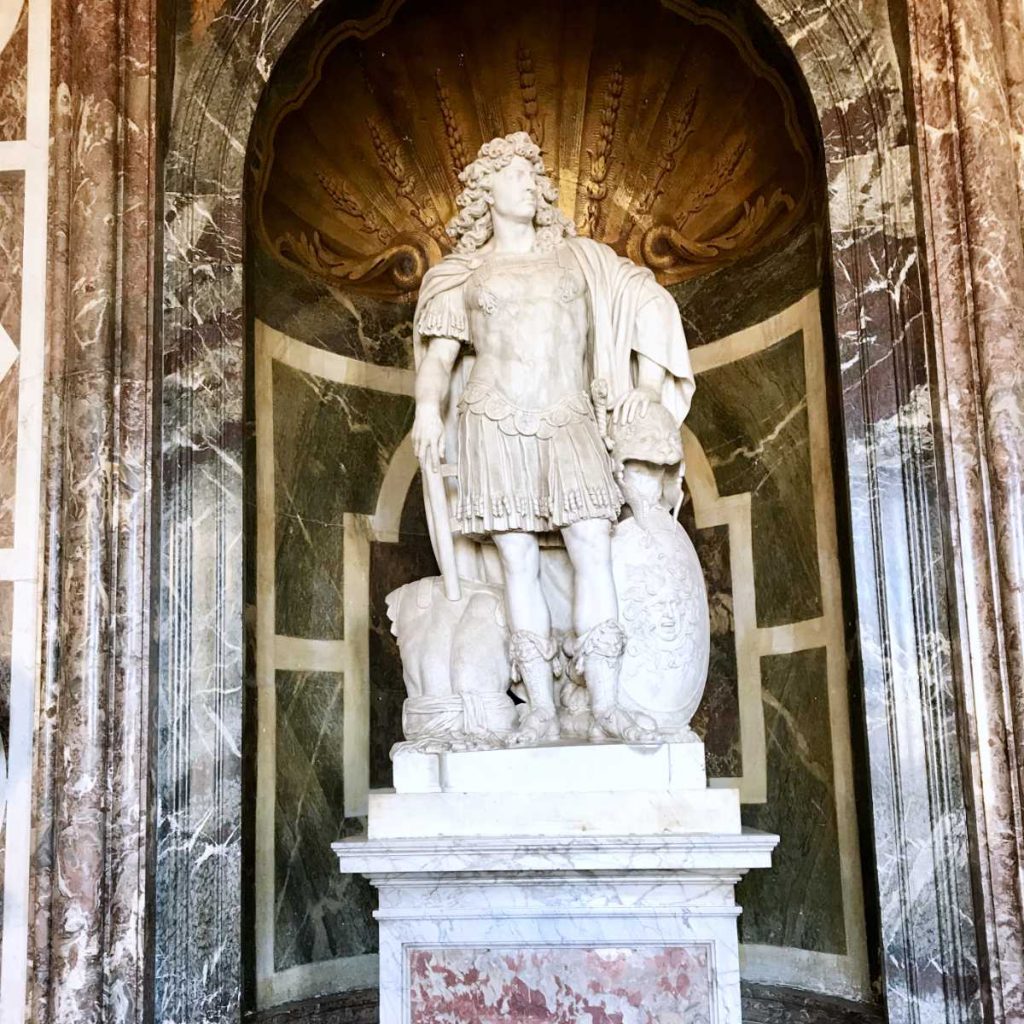
12. He earned the nickname “Le Roi Soleil”.
King Louis XIV controlled so much of the behaviour of the people around him, he earned the nickname “le roi soleil”, or the “Sun King” that everything and everyone revolves around.
13. He became jealous of Nicolas Fouquet’s Château de Vaux le Vicomte.
Louis’s Minister of Finance was a man named Nicolas Fouquet, Marquis de Belle Île. Fouquet at the time finished construction on his beautiful new Château de Vaux-le-Vicomte.
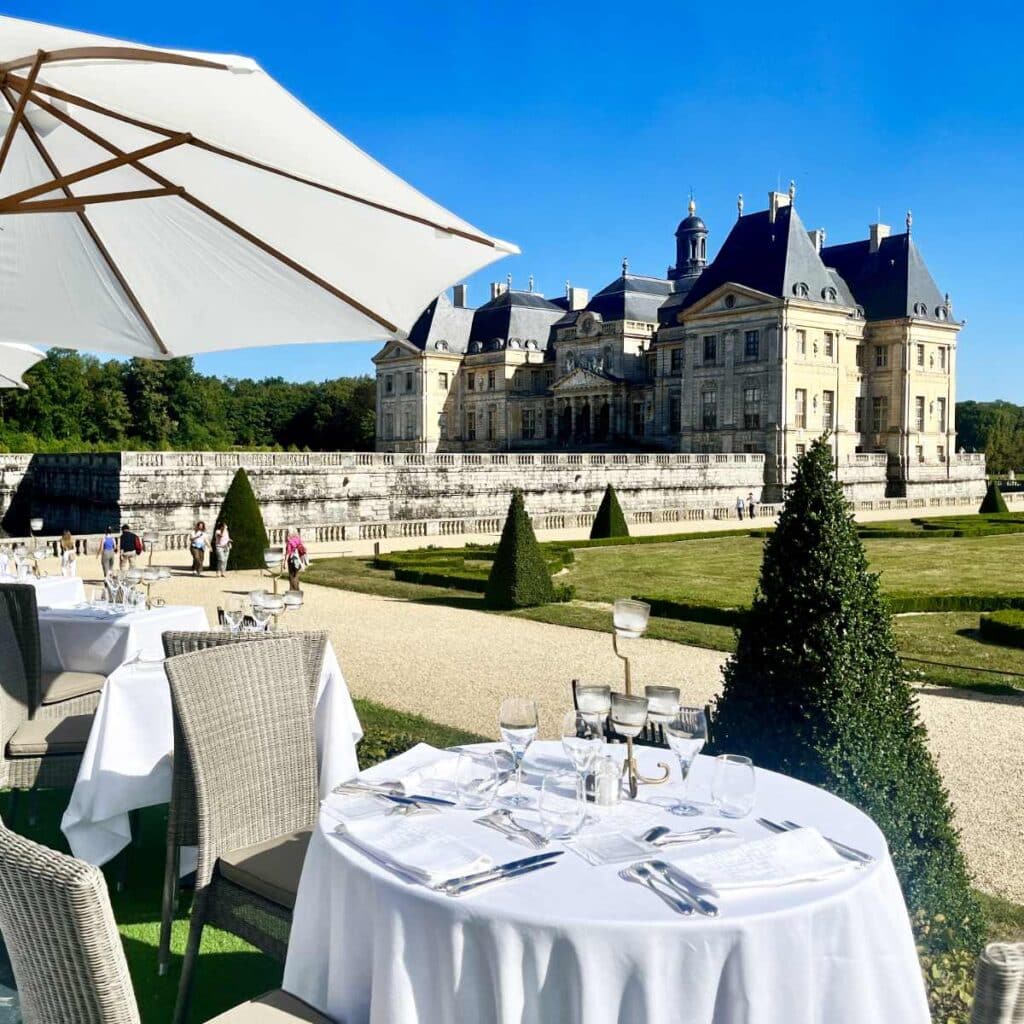
A famous fête took place on 17 August 1661, where Molière’s play ‘Les Fâcheux’ debuted. But the celebration was too impressive and the Fouquet’s home too luxurious. Instead of flattering the King, the extravagance enraged him, and he had Fouquet arrested.
He charged Fouquet for misappropriation of public funds, on the assumption that Fouquet could not have paid for all this luxury by himself. Fouquet was arrested and imprisoned for life and his wife exiled.
The château was sequestered, and Louis raided it for many of its riches. He also ordered all the artisans working on this château, including the famous engineer Andre le Notre, to work the same magic on his Palace of Versailles instead. Except bigger and better.
14. He commissioned the Gardens, Fountains, and Grand Canal at the Palace of Versailles.
With Andre le Notre in charge, Louis set about looking at the gardens around the Palace of Versailles. However, the problem was that Versailles was one of the few châteaux in France that wasn’t located near a river.
For the King who wanted to do better than the Château de Vaux le Vicomte, artificial sources of water needed to be created. Le Notre designed a system of hydraulics and canals to bring running water to the Château from the Seine river that was not exactly nearby.
He built underground aqueducts to supply water for the Palace and to power the fountains with an elaborate system of pipes and faucets. Andre le Notre was so successful, he would go on to also do the gardens at Chateau de Fontainebleau and Chateau de Chantilly.
The Grand Canal designed by Le Notre is over 1 mile long, and you can even go boating on it. This engineering marvel still exists to this day and continues to power the elaborate fountains.
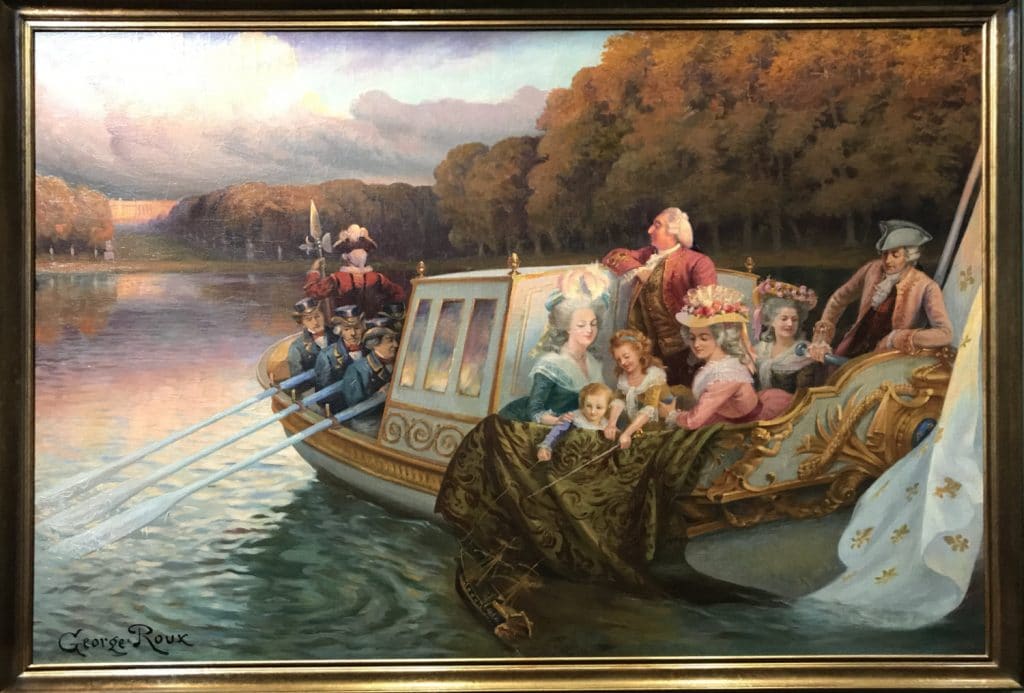
Around the palace is a series of gardens, created in a formal style called jardin à la française. Compared to the jardin à l’anglaise (English garden), the French formal garden emphasizes symmetry and grandeur to symbolize Louis XIV’s absolute power, even over nature.
With sculptures and elaborate garden hedge sets, in the center of it all is a pressurized set fountains capable of launching water high into the air was built to host light shows and a spectacle.
15. He married his first cousin Maria Theresa of Spain.
Intermarriages were common at the time and Habsburg Spain and France had already fought several wars.
Another attempt to end the conflict was made with the French King Louis XIV marrying his first cousin on the maternal side the Princess Maria Theresa of Spain. (She was was also a 2nd cousin on the paternal side as her mother was Elizabeth of France!)
Needless to say, the Louis and Maria Theresa struggled having children. They had 6 children together, only 1 of which survived to adulthood to give him an heir. She died of illness at the age of 44.
16. He had numerous affairs.
The Sun King Louis XIV was never very faithful to his wife, even when she was alive. He had several lovers with whom he had numerous children.
Amongst his more famous lovers were Louise de La Vallière and the Marquise de Montespan.
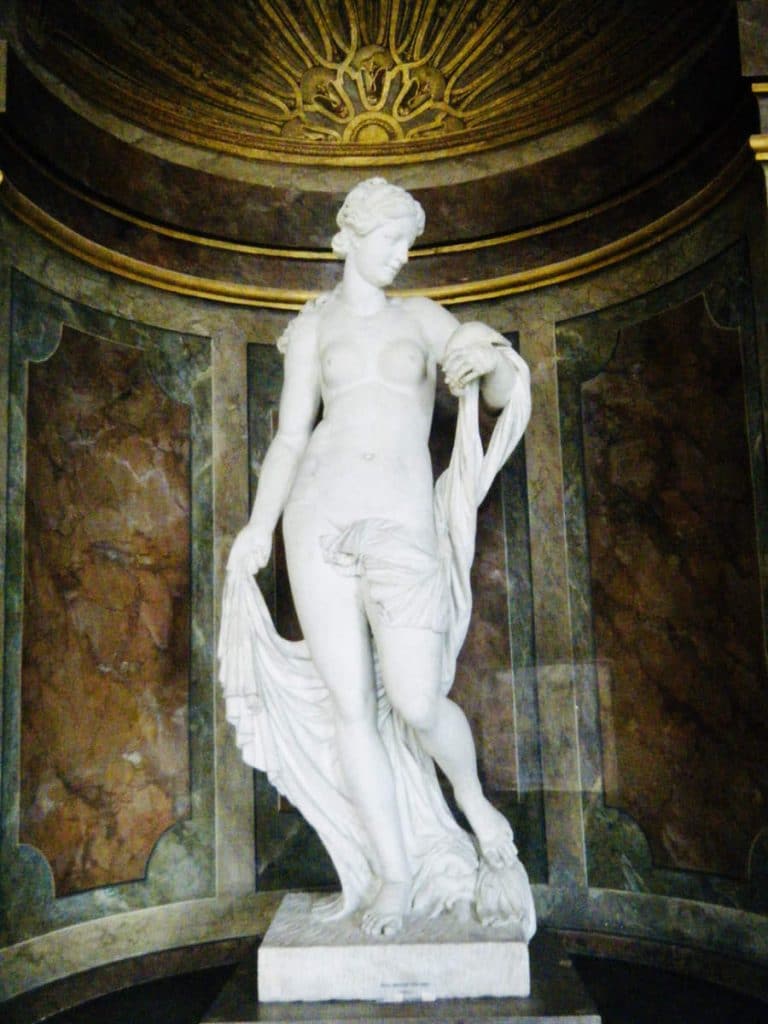
17. He had several illegitimate children that he later recognized.
With Louise de La Vallière he had 5 children, with the Marquise de Montespan he had at least 7 children. There were at least 4 other children that we know of.
Louis XIV acknowledged several of his children and married them off to cadet branches of royalty and amongst the nobility.
18. He may have secretly gotten married for the 2nd time.
It is believed that after the death of his 1st wife, he married one of his later mistresses, Françoise d’Aubigné, Marquise de Maintenon. She was initially there as a governess to take care of his children (legitimate and illegitimate), before catching the eye of the King.
It is thought that they were married secretly at the Château de Versailles around 10 October 1683 or January 1684. The wedding was considered an open secret, and she became one of the King Louis’s closest advisers. They did not have any children together.
Madame de Maintenon founded a school for girls of impoverished noble families, and continued to be highly regarded by Louis’s heirs after his death and by visiting dignitaries, including Tsar Peter the Great of Russia.
19. He revoked the Edict of Nantes and triggered religious persecution.
One of the royal ancestors of King Louis XIV, his grandfather Henry IV had brought about a tense peace to France by offering religious freedoms to the Huguenots.
King Henry IV was former Huguenot, converting to Catholicism with the famous saying “Paris is worth a mass”. He issued the Edict of Nantes, to allow Huguenots religious freedoms and to hold office.
His grandson Louis XIV however decided to revoke the 1598 Edict of Nantes. He proceeded to severely persecute French Protestants and Huguenots, forcing between 300,000-400,000 to convert to Catholicism and over 200,000 people to flee France.
20. The Man in the Iron mask was reputed to be his brother.
The Man in the Iron Mask was an unidentified prisoner who was arrested in 1669 or 1670 by King Louis XIV and subsequently held in a number of French prisons, including the Bastille and Château d’If island near Marseille.
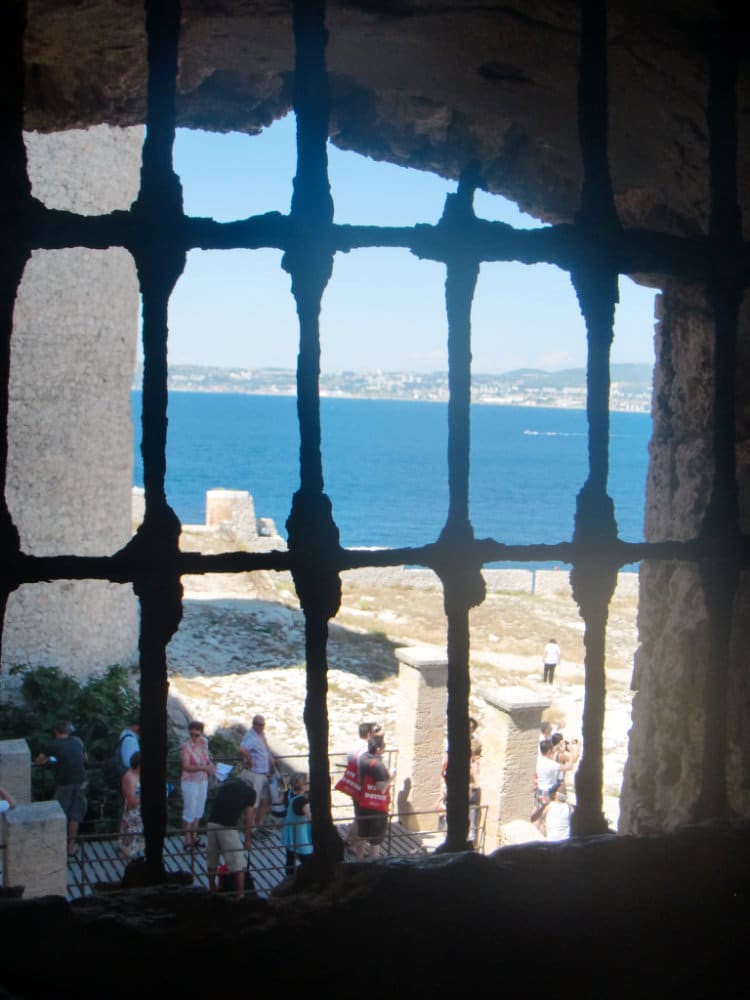
He was held in the custody of the same jailer, Bénigne Dauvergne de Saint-Mars, for a period of 34 years. While his true identity remains a mystery, he was reputed to the older brother or twin brother of the Sun King Louis XIV.
21. He commissioned Les Invalides in Paris.
The Hôtel des Invalides was commissioned in 1670 by the Sun King Louis XIV to provide accommodation and hospital care for wounded soldiers. Les Invalides, literally means for “invalids”.
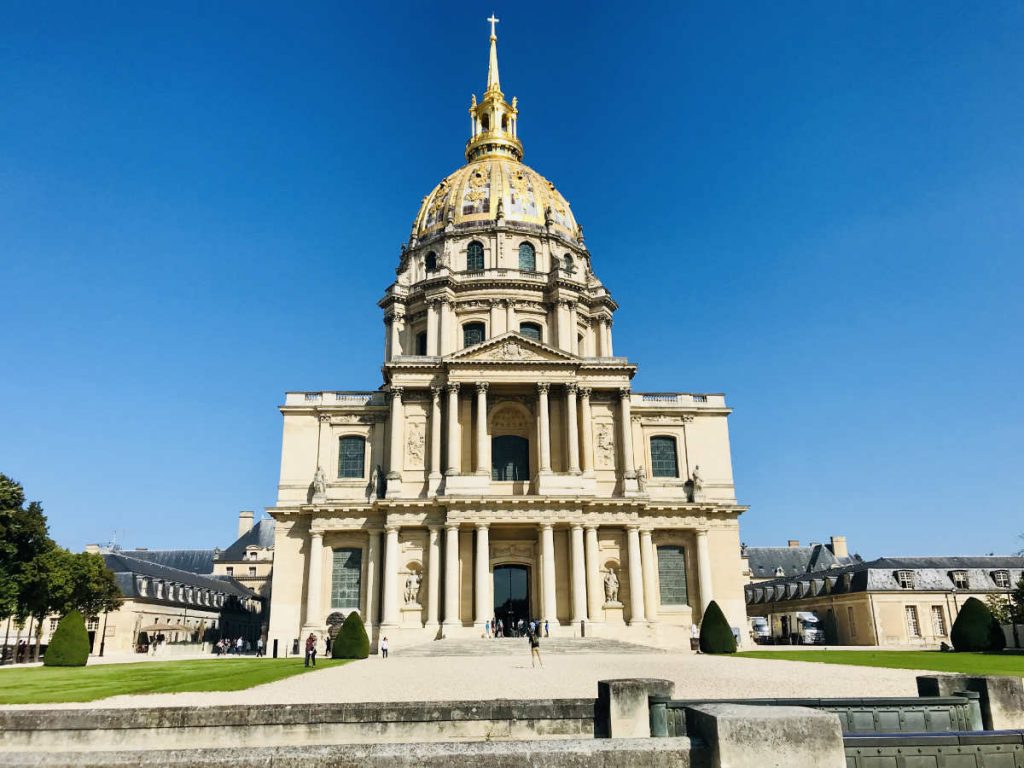
As always, Louis wanted something big. He chose the plains of Grenelle, which at the time was outside the city of Paris. It was close to his capital but above all close to the Seine. This is important because at the time, everything was transported by the river.
It would be another larger-than-life royal, Emperor Napoleon Bonaparte whose body lies in state in the tomb there, but it was the Sun King that made it all possible.
22. He placed his grandson on the Spanish throne.
When the Spanish King Charles II died in 1700, he left no heirs. He and Louis were first cousins through Louis’s mother Anne, and Louis himself had a claim to the throne.
With the Dutch and English all in conflict with Spain and France, Louis managed to avoid war and place one of his grandsons, Philip, Duke of Anjou, on the Spanish throne.
The new King Philip V of Spain was not in line to the French throne, and thus the two countries would continue to remain separate.
23. He constructed the Canal du Midi
In the south of France today, stands the renowned engineering feat known as the Canal du Midi.
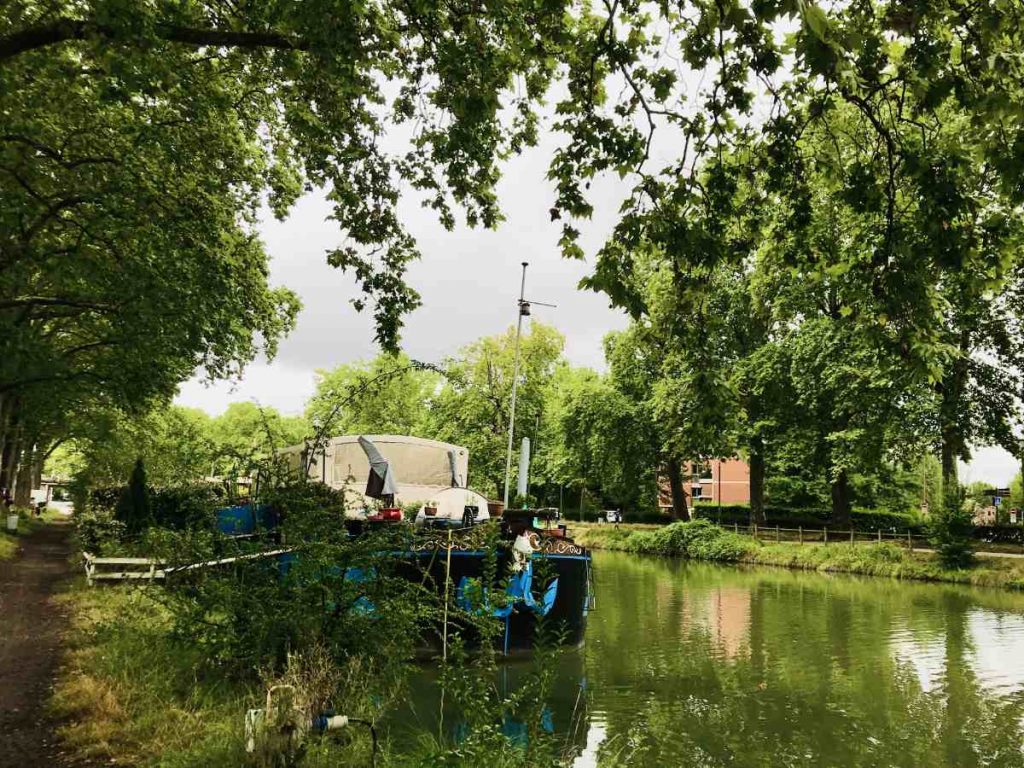
In effect, this waterway links the Mediterranean sea and the Atlantic ocean, making it a crucially important crossroad within France rather than having to go around Spain and the Iberian coastline. The idea for a canal here was debated since the days of the Roman empire as a mode of transport and a trade route, but always met with failure.
It was commissioned by Sun King Louis XIV of France in 1666, who let his engineer Pierre-Paul Riquet take the lead on the project. Riquet would spend much of his own fortune to ensure that the Canal was completed in 1681.
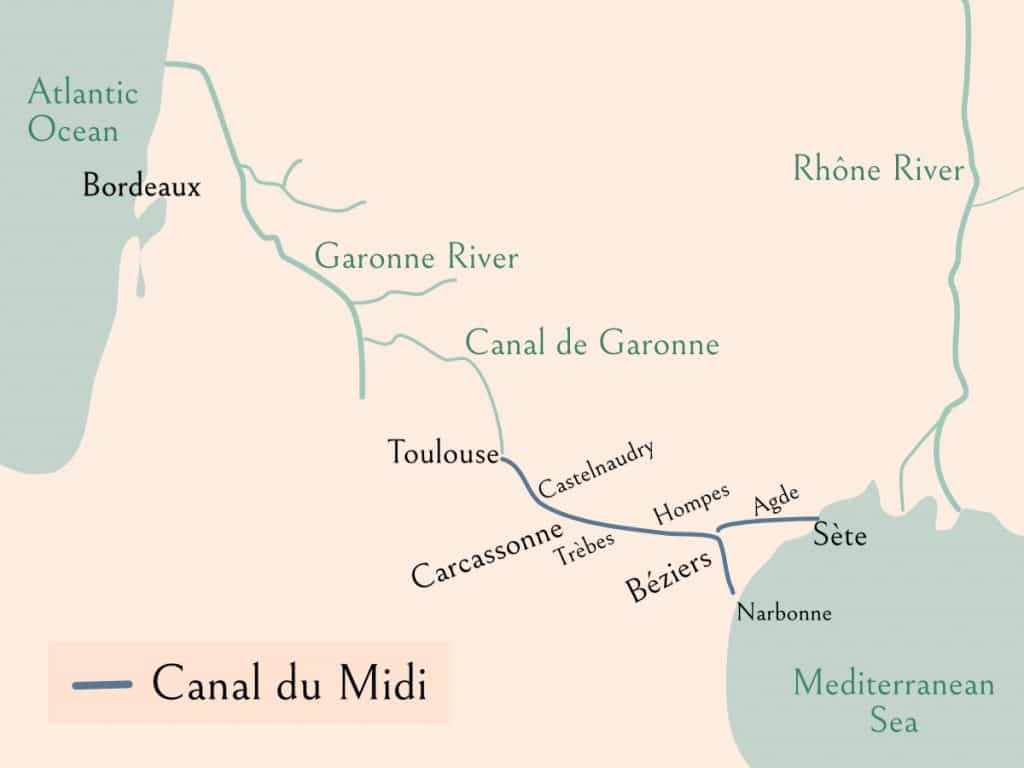
After completion, the Canal was used to transport wheat and wine products from the Languedoc to Toulouse, Bordeaux, and Marseille, and as a way to collect salt tax from the trade. It has 91 locks across the canal to allow the water levels to be adjusted. There are also 6 large aqueducts to allow the canal to cross rivers that could disrupt the water flow.
These days, it is its scenic waterways and natural landscapes that make it so famous. The canal has been part of the UNESCO World Heritage sites list since 1996.
24. He died at the age of 76.
The Sun King Louis XIV died in 1715 at the age of 76. He had ruled France for 72 years, and in that time transformed France. His is the longest reign in the history of France, and among the longest of all the European monarchies.
Later, Emperor Napoleon Bonaparte would describe him not only as “a great king”, but also as “the only King of France worthy of the name”.
The writer and philosopher Voltaire wrote: “His name can never be pronounced without respect and without summoning the image of an eternally memorable age”.
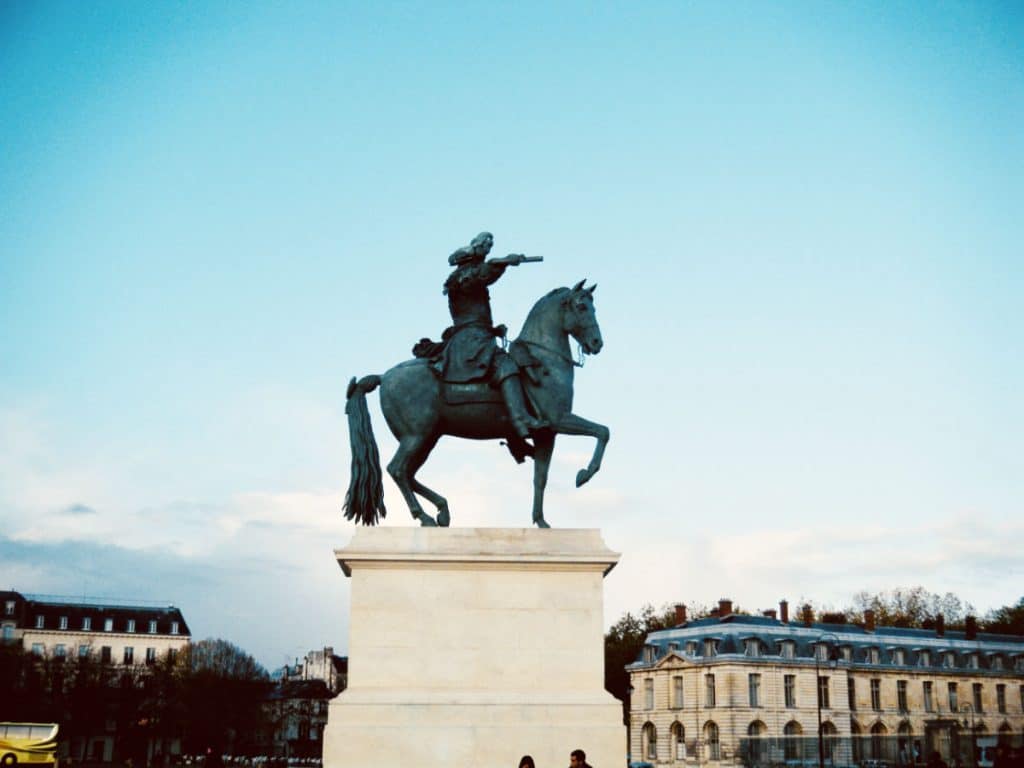
25. He was succeeded by his grandson, King Louis XV of France.
Louis’s son predeceased him (also named Louis), so it would be his grandson who would become King Louis XV of France. His grandson would also be 5 years old, when he ascended to the throne. The French revolution would be less than 75 years later.
26. The high school Louis le Grand in Paris is named after him.
In the heart of the Latin Quarter and the 5th arrondissement sits one of the most famous schools in France, the Louis le Grand. The school was founded in the early 1560s by the Jesuits as the Collège de Clermont, was renamed in 1682 during Louis’s reign.
After the revolution, names of royalty were not popular. It changed names several times, but went back to being Lycée Louis le Grand in 1814. Today it remains one of the two best high schools in the French education system along (along with Henri IV, named after another King).

If you enjoyed that article, you may like to read more about other French royals here. A bientôt!
¹ Featured Image: Sun King Louis XIV by Hyacinthe Rigaud – courtesy of wikipedia
